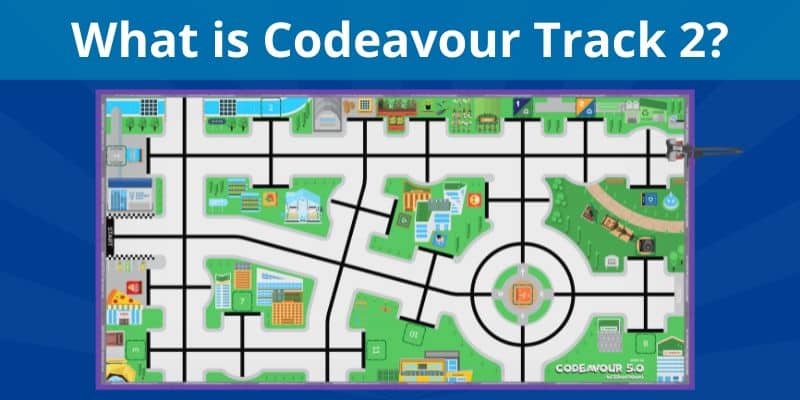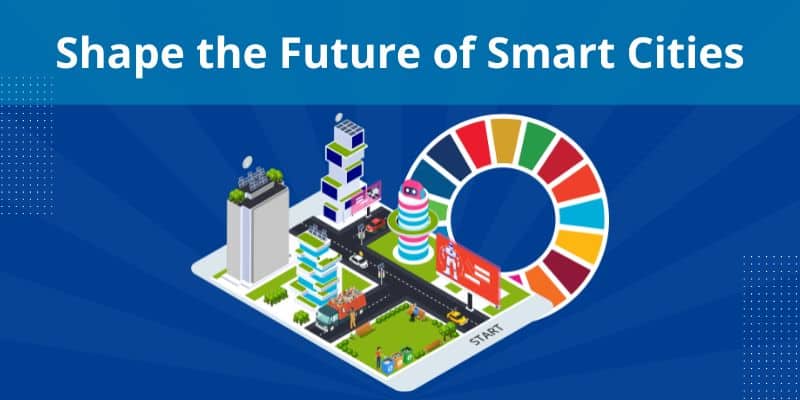Today’s urban areas face pressing challenges like pollution, congestion (overcrowding), and resource management. To help tackle these burning problems, the AI Robo City Challenge in Codeavour 2023–24 Track 2 AI Robo City Challenge presents an innovative solution. This competition aims to authorize young tech enthusiasts to use AI, ML, and Robotics to tackle urban issues, promoting sustainability and efficient city management.
By engaging in this student innovation challenge, young innovators will improve their technical skills and contribute to the global sustainable urban development aligned with the United Nations’ Sustainable Development Goals (UNSDGs). Continue reading to learn how you can make a difference in reshaping our cities for a better future.
Introduction to Codeavour Track 2: AI Robo City Challenge
In the Codeavour 5.0 International, Track 2: AI Robo City Challenge is a physical robotics competition. The participants will design and build their Robot with Quarky to complete the different object-placing missions. Your aim is to tackle 11 real-world city-themed tasks within a specific timeframe on an 8 ft x 4 ft game field.
These challenges include environmental tasks like solar panel installation, tree plantation, smart waste management, and urban simulations such as pizza delivery and patient transport. Points are awarded for task completion and rule adherence, focusing on manual and autonomous control. The track not only tests participants’ technical and problem-solving skills but also encourages them to conceive innovative solutions for smarter, greener cities.
Yet to participate in Codeavour 2023-24? Register Now!
The Real-World Challenges of Track 2 are the Heart of Innovation
Here’s an explanation of each of the 11 challenges in Track 2 of the Codeavour competition:
- Complete the Water Treatment Plant: Address a crucial incident where the pipeline has been damaged at a water supply plant. Your task is to identify and repair the damage to ensure a continuous flow of clean water.
- Solar Panel Installation: Utilize solar energy as a sustainable solution for global energy needs. The challenge involves installing solar panels over a river using robots, contributing positively to tackling climate change.
- Deliver Veggies to the Supermarket From a Hydroponics Farm: Emphasize sustainable urban farming by collecting and transporting vegetables grown in a hydroponics farm to a supermarket, thus ensuring food security and minimizing environmental harm.
- AI-powered Residential Waste Collection: Tackle the issue of waste management by collecting waste from residences, identifying whether it is biodegradable or non-biodegradable, and disposing of it accordingly.
- Clean the Park: Focus on maintaining clean parks in smart cities, enhancing the city’s livability and environmental care. This challenge involves ensuring the cleanliness and upkeep of city parks.
- Redirect the Wind Turbine: Align a windmill with the wind’s direction to optimize energy generation. The challenge involves repositioning a windmill, initially placed in a random direction, to face north.
- Smart Pizza Delivery: In a smart city context, utilize an autonomous food delivery bot designed to pick up and deliver pizzas directly to customers, demonstrating the use of intelligent robots in sustainable city living.
- House-to-Hospital Patient Transfer: Use integrated digital systems for rapid medical service access. This challenge involves employing real-time traffic monitoring and optimized routes to enhance the efficiency of patient transfers to hospitals.
- Rescue the Cat Stuck on the Tree: Design and program a robot to safely rescue a cat stuck in a tree using a crane. The task requires carefully removing the crane’s counterweight and lowering the cat to the ground.
- Help the Kids Cross the Street to Get to School: Address a real-world problem of a busy road and the safety of children. The mission involves helping a group of kids cross a busy street safely to reach their school.
- Greener City (Tree Plantation): Engage in an eco-friendly mission where the robot acts as an eco-warrior, picking up and planting trees in a park, contributing to a greener and better world.
Participation Rules and Guidelines for AI Robo City Challenge
Here are a few of the Participation Rules and Guidelines for Track 2:
- Team Composition: You can participate individually or with a maximum of three members, with one mentor, coach, or guardian. The age groups are Elementary (7-10 years), Junior (11-14 years), and Senior (15-18 years).
- Registration: Participants must register on the Codeavour 5.0 International website.
- Robot Specifications: The robot should be programmed using PictoBlox and built using Quarky or the creator’s kit for an upper hand. The mentor’s role is limited to guidance; direct involvement leads to disqualification.
- Before and During the Competition: Teams prepare their robots in advance, adhering to strict guidelines and passing a verification process. During the competition, strategic use of special cards like Yellow (Foul Exemptions), Red (Teleportation), and Blue (Mode Switching) cards can dramatically alter the course of the challenge.
For more information, read our detailed Track 2 Rulebook.
Project Submission Process and Evaluation Criteria for Codeavour AI Robo City Challenge
Submissions should align with the outlined guidelines; failing to do so may lead to disqualification. Each team must submit detailed information about their robot, including photos and videos, through the Codeavour 5.0 submission portal. During the competition, scoring is based on precise criteria: full points are awarded if the robot completes tasks within the designated area. This process ensures a fair and comprehensive evaluation of each team’s technical skills and innovation in addressing urban challenges.
How to Prepare for Codeavour Track 2
Here are a few important tips for Track 2 Codeavour:
- To excel in Codeavour Track 2, teams should thoroughly understand the competition rules and objectives.
- Focus on building and programming your robot using PictoBlox and Quarky, ensuring it meets the specified criteria.
- Practice solving the outlined urban challenges, such as waste management and renewable energy tasks.
- Regularly test and refine your robot’s performance.
- Leverage the guidance of mentors while maintaining adherence to the rule of limited mentor involvement.
- You can access the full Rulebook for Track 2 and Arena Resources here.
In a Nutshell
As you venture on your journey in Codeavour Track 2, remember that this is more than just a competition; it’s an opportunity to shape the future of the urban landscape. Your AI, ML, and robotics innovations can revolutionize urban living, making cities smarter, greener, and more sustainable. Your creativity and problem-solving skills will not only be tested but also celebrated. So, dive into this challenge with enthusiasm and determination. Let your robots testify to your creativity, and your ideas inspire change. Prepare to make a significant impact and, most importantly, enjoy the learning and innovation journey ahead in the AI Robo City Challenge.










